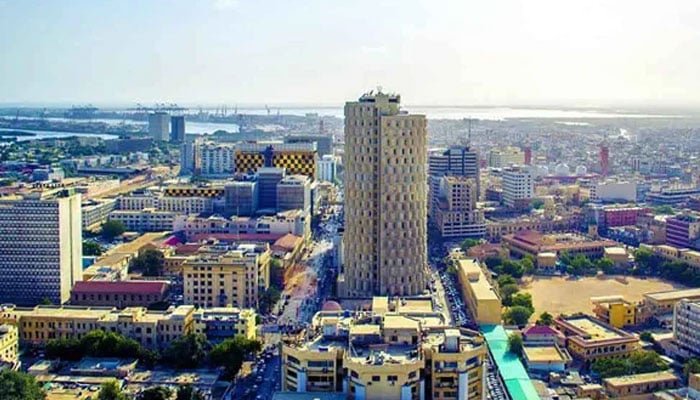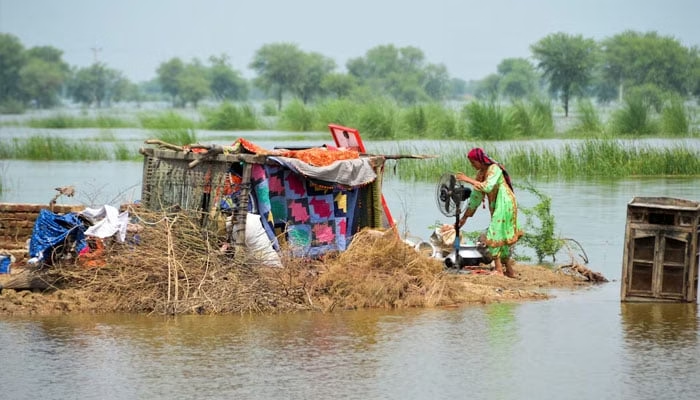On Friday morning, mild-to-moderate earthquake in northern Pakistan rattled Bajaur, North Waziristan, and Abbottabad, forcing sleeping residents to rush outdoors in fear. This incident came less than 12 hours after a stronger quake shook Islamabad, Rawalpindi, and several parts of Khyber Pakhtunkhwa, underscoring the region’s vulnerability to seismic activity.
Recent Earthquake in Northern Pakistan
According to the Pakistan Meteorological Department’s National Seismic and Tsunami Monitoring Centre, Thursday’s quake measured 5.9 in magnitude. Its epicenter was located in Afghanistan’s Hindu Kush region at a depth of 111 kilometers, an area frequently associated with seismic movements due to the collision of the Indian and Eurasian tectonic plates.
The earthquake in northern Pakistan was widely felt across Islamabad, Rawalpindi, Peshawar, Malakand, Charsadda, and Parachinar, as well as in Abbottabad, Swat, and Attock. In Punjab, residents in Mianwali, Chakwal, Talagang, and Multan also reported tremors. In Azad Jammu and Kashmir, tremors shook Neelum Valley and Dhirkot. Although the panic was widespread, no immediate reports of damage or casualties have surfaced in Pakistan.
Why Northern Pakistan is Prone to Earthquakes
The frequent occurrence of earthquake in northern Pakistan is linked to the country’s geographical location. Pakistan lies on the boundary of the Indian and Eurasian tectonic plates, one of the most active seismic zones in the world. Movements in this zone often trigger earthquakes in Khyber Pakhtunkhwa, Gilgit-Baltistan, and Azad Kashmir, with shocks sometimes extending to Punjab and even Karachi.
The Hindu Kush region of Afghanistan, where the recent quake originated, is notorious for deep-focus earthquakes. While such quakes are less likely to cause catastrophic damage compared to shallow ones, their wide-ranging impact is often felt across large areas, including northern Pakistan.
Historical Context of Earthquakes in Pakistan
The earthquake in northern Pakistan this week serves as a reminder of the devastating potential of seismic activity. The 2005 Kashmir earthquake, which measured 7.6 in magnitude, killed over 87,000 people and displaced millions. More recently, Pakistan has faced smaller but frequent tremors, highlighting the urgent need for preparedness and disaster management systems.
Globally, South Asia is considered one of the most earthquake-prone regions. According to the United States Geological Survey (USGS), the Hindu Kush-Himalayan belt experiences some of the most powerful and frequent earthquakes in the world, making countries like Pakistan and Afghanistan highly vulnerable.
Impact on Daily Life and Infrastructure
Though Friday’s earthquake in northern Pakistan did not cause reported fatalities, the psychological toll on residents was significant. People in Peshawar, Abbottabad, and Bajaur described the tremors as strong enough to shake buildings and wake sleeping families. Such recurring shocks often lead to panic, particularly in rural areas where housing structures are less resistant to seismic activity.
Experts warn that Pakistan’s infrastructure remains ill-prepared for major earthquakes. According to a 2024 report by the National Disaster Management Authority (NDMA), over 40% of buildings in northern Pakistan fail to meet modern earthquake-resistant standards. This raises serious concerns about the country’s readiness to withstand stronger tremors in the future.
Lessons from Afghanistan’s Recent Earthquake
The recent magnitude-6.0 earthquake in eastern Afghanistan killed more than 2,200 people and injured over 3,600 in Kunar province. The tragedy demonstrates how vulnerable communities in the region are to seismic disasters. Many of the casualties were attributed to poorly constructed homes that collapsed instantly during the quake.
For Pakistan, this is a wake-up call. The close proximity of earthquake epicenters in Afghanistan means northern Pakistan faces similar risks. Strengthening building codes, improving early warning systems, and raising public awareness must be prioritized.
Preparedness for Future Earthquakes
Experts recommend several steps to minimize the risks associated with earthquake in northern Pakistan:
- Strengthening Building Codes: Enforcing strict seismic safety standards for new constructions.
- Early Warning Systems: Expanding monitoring networks to provide timely alerts.
- Public Awareness Campaigns: Educating communities about earthquake safety practices.
- Emergency Response Training: Equipping local authorities and volunteers with disaster-response training.
The NDMA has repeatedly emphasized the importance of community-level preparedness, particularly in high-risk zones like Khyber Pakhtunkhwa and Azad Kashmir.
The recent earthquake in northern Pakistan may not have caused major destruction, but it serves as a reminder of the country’s seismic vulnerability. As tremors continue to shake Islamabad, Rawalpindi, Peshawar, and other northern regions, the need for proactive measures becomes increasingly urgent. Strengthening infrastructure, improving disaster management, and learning from neighboring Afghanistan’s tragic experiences are critical to safeguarding lives.



